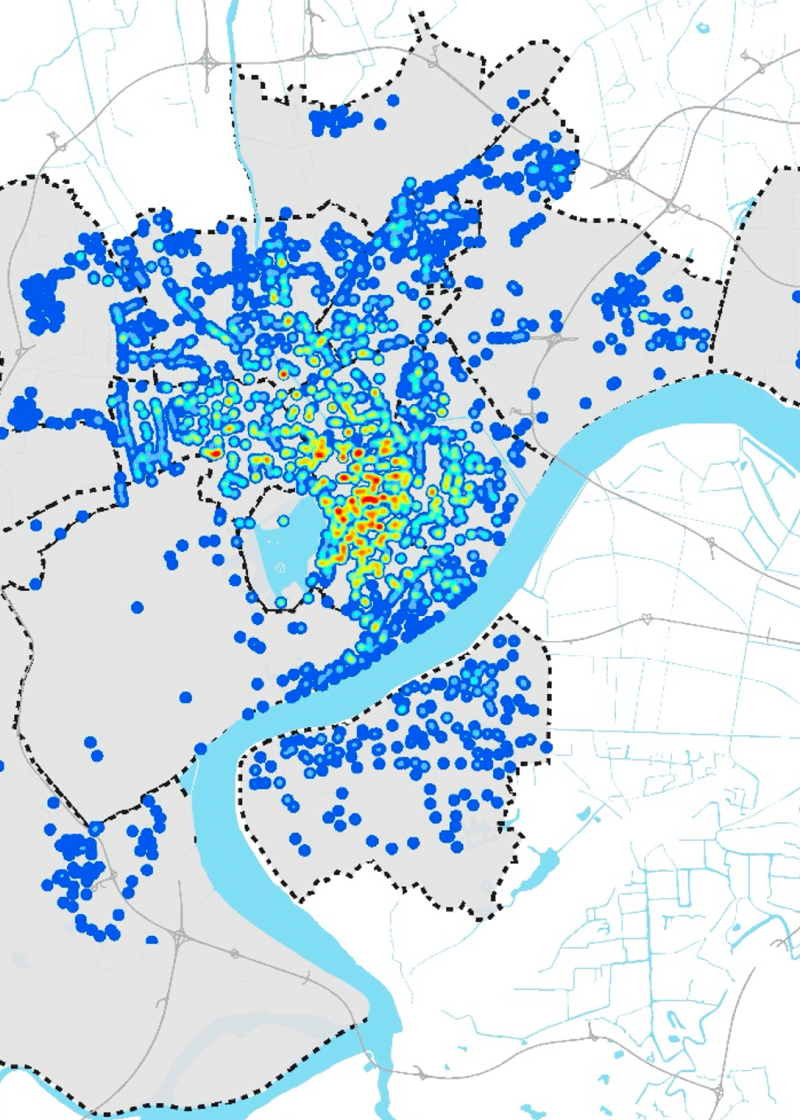Study on the Bicycle-sharing Usage Characteristics, Behavior Mechanism and Green Strategies under Multi-scaled Built Environment
To investigate the temporal-spatial characteristics of bicycle-sharing activities, the definitions and calculation methods of a number of usage indicators at rental station level were proposed, such as rental-time-length sphere quotient, pickup-return tidal ratio and dock turnover rate. With the technology of data mining and visualization, the usage features of all stations were examined in fine-grained scale and panoramically, based on IC card data of a typical workday in Hangzhou; and the usage differences of various geographical areas were compared aggregately. It found that those measuring values varied significantly from station to station and a circle layer structure of spatial differentiation was emerged, subject to the impacts of urban layout and built environment. The stations with larger usage amount, less tidal ratio and high turnover rate mainly located in the urban centre, while those with opposite features mainly distributed in the urban fringe and peripheral clusters. The rental time length of stations beyond scenic area were less than that of scenic area, however the percentage of short time usage was low, revealing its malfunction as feeder of transit. Finally, some suggestions were proposed in response to the problems of uneven demands, undesirable performance, and insufficient role of last mile. This study of station-based usage indicators could provide an effective technical tool for urban spatial structure quantitative analysis and bicycle-sharing system evaluation.

National Natural Science Foundation of China





